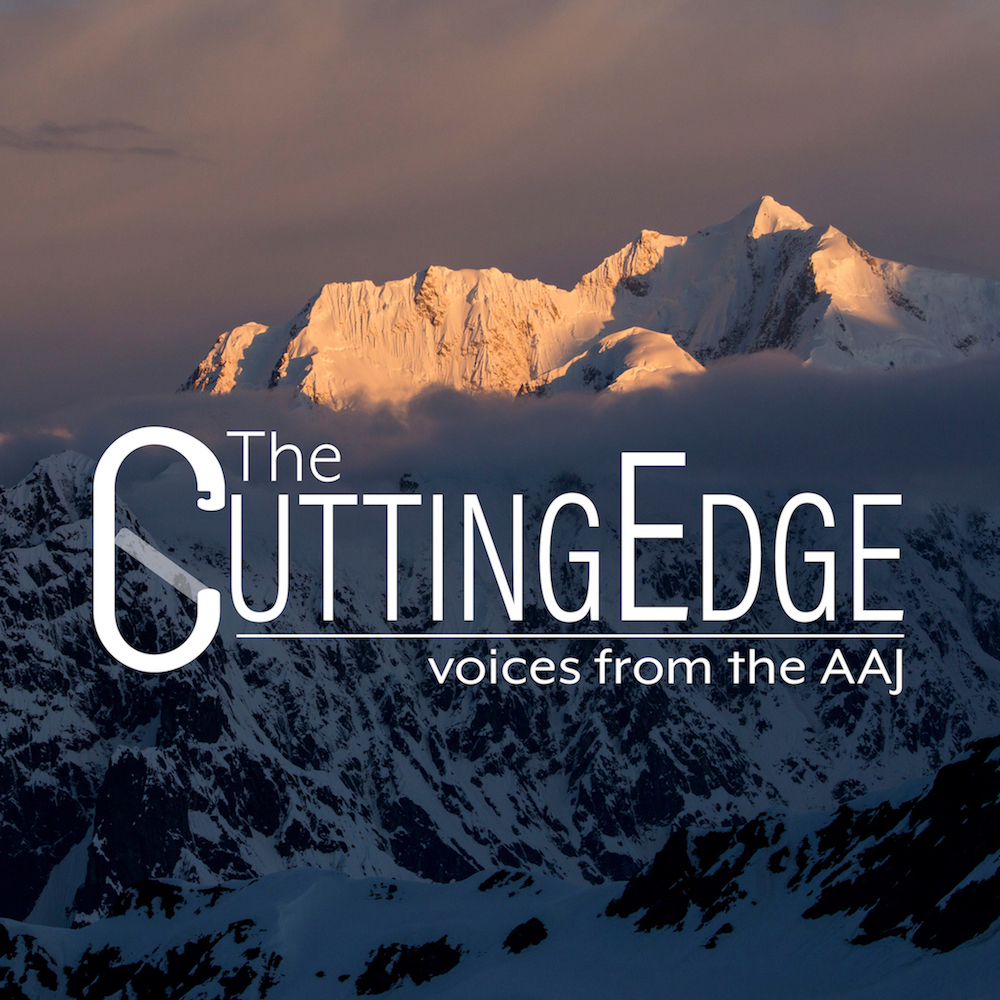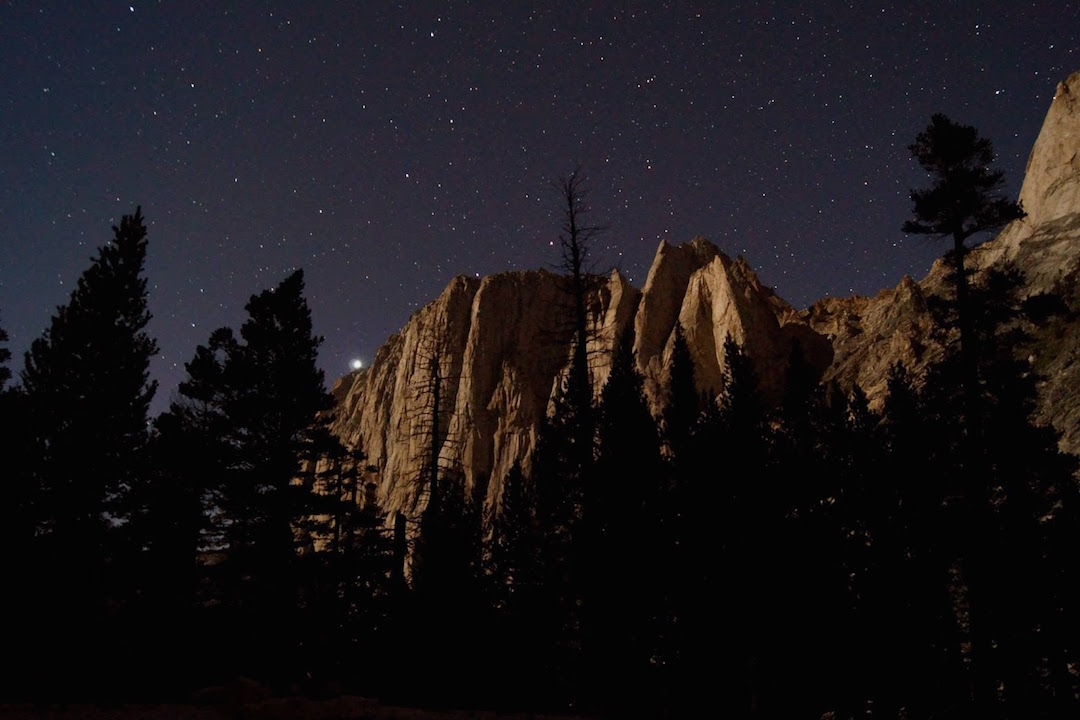Angel Wings, Southwest Buttress, Killing in the Name
California, Sierra Nevada, Sequoia National Park

The southwest buttress (far left side) of Angel Wings was completed by Fred Beckey, Bill Lahr, Craig Martinson, and Alan North in 1977. It took four days spread over a few years to finish the route Wings Over Sequioa.(See Fred Beckey’s 100 Favorite North American Climbs and AAJ 2014 for details and route lines.) They climbed the southern aspect of the pillar, steering right into a notch about four- fifths of the way up the wall. After the climb, they tossed their haul bags, which exploded at the base. The event evolved into an untrue legend about Beckey’s “black book” being lost and later recovered by another climber.
I was attracted to Angel Wings by its fascinating geometry and beautiful but discontinuous cracks. When Luke Stefurak and I scoped out the wall from the base, we had trouble putting the puzzle together for an obvious route. Both of us were interested in a natural weakness, something that would allow us to climb mostly free. We saw two attractive crack systems left of the Beckey route. About 600’ up, the cracks were separated by a 150’ band of dark rock. Could we connect them?

Without wasting much time, we started the climb with a short pitch that included a wet, spicy 5.10 boulder problem. From there, the climb evolved into steep, clean, high-quality cracks. The second pitch (5.11b/c) and the third (5.10+/11-) mostly climb awesome hand cracks in a right-facing corner. The fourth pitch includes cruxy face climbing (5.11). As we hoped, the dark rock band (which we dubbed the A5 Traverse) went free, at 5.11+, but only with four bolts added for protection. Above this we regained a weakness and found three great pitches of varied, sustained, and quality 5.10 and 5.11 cracks. At this point we reached a blank wall, and both of us were worn out by the sustained climbing. We wouldn’t accept a bolt ladder as a legit method to advance the route, so we decided to pull the plug, plenty happy with the quality of the climbing we had done up to our high point.
The following day, I opted out of a needed rest day and hiked up to view our line again. In order to spy a way to connect the crack system, and avoid the need for a bolt ladder, I took multiple close-up photos of the wall, hoping to find a weakness.
Unfortunately, Luke could not join me for a rematch, as he lives in Seattle, but it did not take me long to find the right partner. “I don’t care if we fail,” said Adam Ferro in a phone conversation. A few weeks after discussing the logistics, Adam and I made the 17-mile trek to the campground at Hamilton Lakes.
The following day we approached the base of the southwest buttress and started climbing just after first light. To my surprise, I was able to lead or follow free to the previous high point. There, I managed to do some thin, clean aid up a hollow flake, including one hook move; I placed a single bolt to pendulum to another crack. This took us to a giant ledge. A 100- foot traverse left and then back right put us at the base of a giant chimney system. It was very intimidating and jammed with massive flakes. Adam took the first pitch in the chimney (5.11), and we swapped the next two pitches (5.10 C1), pulling on gear in a few spots for efficiency. We lost the race against the sun and climbed the final two pitches in the dark. At 9:42 p.m. on July 24 we stood atop the southwest buttress and let out a few celebratory roars. With 1,700’ of quality free climbing and less than 30’ of direct aid, we couldn’t have asked for a better line. We reached camp again at midnight. Our route is called Killing in the Name (V 5.11+ C2).
– Vitaliy Musiyenko





